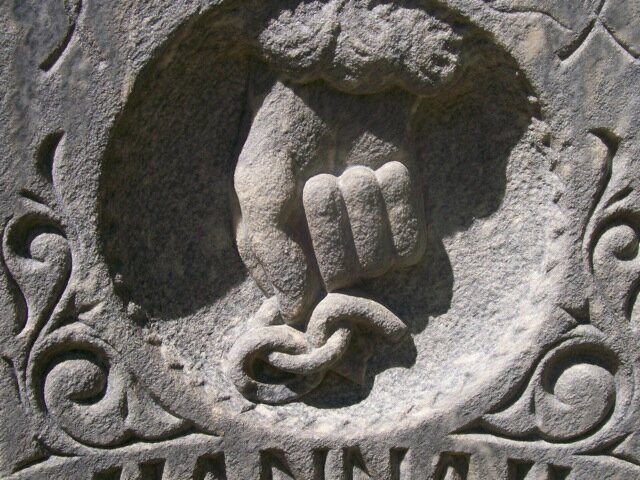What is the difference between Gravestone Conservation and Gravestone Restoration?
A great amount of debate has focused recently regarding the terminology used in proper preservation procedures. Words which have a basic meaning to the average person can mean very different things to specialists in a given field. Therefore, we will clarify a few basic definitions.
Preservation: To preserve, to keep safe from harm or injury. A great general purpose word to overview the whole field of historic preservation.
Restoration: To Restore, to bring back to an original or a former, more desirable condition. The layman’s term for fixing anything up, and try to make it look new again. It also implies, doing more then just preserving, regarding a memorial or stone statue.
The re-lettering of historic inscriptions on a gravestone or tomb would be a good example of a restoration effort. This type of aggressive tactics is not considered beneficial, as they will compromise the historic integrity of the object. Re-lettering may also increase the rate of deterioration by exposing new areas of weakened stone to the weather.
A better alternative would be to save what is left of the monument in question, and then place a plaque beside it with the inscription which has been lost.Conservation: To Conserve, to prevent injury, decay, waste, or loss of.
This has become the proper term, with its meaning in the historic preservation field becoming very specific. Performing procedures to help protect and stabilize an artifact. In this case a sculpture, gravestone, or monument.
Stone Epoxy vs Vapor Transmission:
There are always many different opinions on every subject, and gravestone preservation is not an exception. I recently had an involved back and forth conversation on the Linked In group that I founded, which became nearly a heated interaction. The gentleman from England insisted that epoxy should never be used in any situation. I offered that epoxy is very affective for some kinds of repairs, if the correct epoxy is employed, and it is carefully applied to a clean surface. I maintained that there are many varying ways to solve problems and that there is not one solution, because there is not one question. The entire field of gravestone preservation is really a fusion of other related trades, crafts, technologies, common Sense, and in due time, experience. Suffice it to say that there was no winner to this interaction.
The core of the debate is related to a question, What is rising damp?
Picture the way the wick in an old fashion lantern draws the fuel up to at least a few inches above the oil level. This type of capillary rise is often greatest on a porous stone such as sandstone, which will absorb a great deal of water. Now the primary problem is that if you repair a stone with epoxy, which is broken near the ground, that the epoxy will not permit the moisture to continue rising up the stone before it evaporates out the sides. This is the reason why I do not advice an epoxy only repair be performed when a gravestone is broken very close to the ground. Epoxy is very effective is some situations, it is not a magic wand.
“What kind of epoxy can be used to repair a piece of stone which has broken”?
It may be regarding a gravestone, or it may regard some other stone object which has ended up being fractured into multiple pieces.
Although a plethora of options exist, I will provide information on the few best epoxies I have discovered and how to order them.
I have never seen or used an epoxy sold at a local home center that works well for making stone repairs. Therefore, I recommend you order the epoxy from one of these suppliers. If you are planning on repairing only one or two stones purchase a Barre-Pac, it is your best option. It is a one time use packet, which when mixed together in a small plastic bag is ready for use.
The working time, “pot life” of epoxy will drastically vary depending on the temperature, sunlight, and humidity. If it is very hot, dry and in the direct sunlight, the epoxy will become hard very quickly. This hardening process is called the curing time. The pot life of the epoxies here will range from about 15 minutes to over- night. If you can shade the direct sun, or work on a cloudy day, the pot life will increase.

